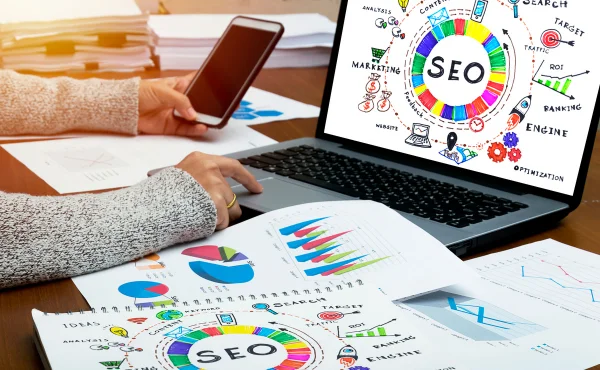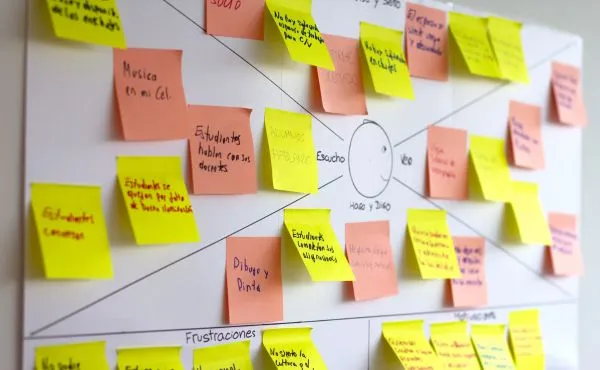
Have you ever wondered why specific websites appear at the top of search engine results? It isn't magic; it's on-page SEO! On-page SEO is the practice of optimizing individual web pages so that they rank higher and receive more relevant traffic from search engines.
Think of it as setting the foundation for your home before decorating it. By focusing on titles, meta descriptions, and content quality, you can make your website look better to both search engines and visitors. Let's look at the key factors that can help your site get ranked!
What is on-page SEO?
On-page SEO, also known as search engine optimization, focuses on all of the elements of your website over which you have control to make it more appealing to search engines. Think about setting up your shop so that it is easy for customers to find and enjoy.
On-page SEO, which includes everything from the words on your page to how quickly it loads, helps search engines better understand your content and, as a result, can improve your site's search rankings. It is about making sure your website says the same language as its potential visitors, using keywords, content quality, user experience, and other factors to differentiate itself from the digital audience.
The Ultimate Guide to On-Page SEO
To improve your search engine rankings and attract more visitors, you must develop an effective on-page SEO strategy. Let's dive into the key factors that will set your website apart.
Title Tags
Your title tag is the first impression search engines and visitors get of your website. It should be a concise and accurate description of your page's content that includes your target keyword. Think about it like the label on a box: if it's interesting and relevant, people are more likely to open it.
Meta Descriptions
Meta descriptions are summaries of what your page is about. A compelling meta description, while not directly influencing your search engine rankings, can increase your site's click-through rate. It's your chance to promote what's on the page and convince visitors to click your link.
URL Structure
A clean and simple URL structure improves both search engine crawlability and the user experience. In an ideal world, your URLs should be short and include a keyword, so that both users and search engines can understand what the page is about.
Headings
Headings help to organize your content, making it easier for readers to navigate and search engines to understand the structure of your site. Use H1 as your main title.
Keyword Optimization
Effectively using keywords throughout your content helps search engines understand what your page is about. However, avoid keyword stuffing, as it can harm your rankings. Instead, aim to incorporate keywords naturally into your text, title tags, headings, and URLs.
Content Quality and Relevance
The heart of on-page SEO is delivering valuable and relevant content to your visitors. High-quality, engaging content that answers your visitors' questions can increase dwell time and decrease bounce rates, indicating to search engines that your site is an important resource.
User Experience and Website Speed
A website that is simple to use and quick to load pleases both visitors and search engines. Improving site speed and making your site easier to use can have a significant impact on your rankings and keep users returning for more.
Mobile Friendliness
With more people than ever browsing on mobile devices, having a mobile-friendly website is essential. A mobile-friendly website can help you rank higher and provide a better experience for your audience.
Internal Linking
Internal linking allows search engines to discover new pages on your website and understand their relevance and relationship to other content. It also improves the user experience by allowing visitors to easily find additional relevant information.
Image Optimization
Images can improve your content, but they can also slow down your website if not properly optimized. Use meaningful file names, compress images to reduce file size, and always include alt text with a brief description, including keywords as needed.
This not only improves search engine rankings, but it also makes websites more accessible to people with visual impairments.
15 Essential On-Page SEO Factors
Conducting Keyword Research
The first, and possibly most important, step in on-page SEO is extensive keyword research. Identifying the right keywords can help you figure out what your target audience is looking for. Use tools like Google Keyword Planner or SEMrush to find keywords with a high search volume but little competition.
Creating Unique and Compelling Titles
Your title should not only include your primary keyword but also be appealing enough to entice users to click. To ensure that it appears well in search engines, keep it to 60 characters or less.
Writing Engaging Meta Descriptions
Meta descriptions are summaries of what your page is about. Though not a direct ranking factor, a well-written meta description can boost click-through rates. Include relevant keywords and create them.
Optimizing the URL Structure
Make sure your URLs are clear and include your target keywords. Avoid using long lists of numbers or unnecessary words. A clean URL structure benefits both users and search engines.
Using Heading Tags Properly
Use heading tags (H1, H2, H3, etc.) to effectively structure your content. The H1 tag should be reserved for your main page title, with subsequent headings used to organize content in a structured way.
Carefully placing keywords
Incorporate primary and secondary keywords into your content, including the introduction, body, and conclusion. Avoid keyword stuffing, as it can harm your SEO.
Creating High-Quality, Relevant Content
Content is king. Create value with well-researched, informative, and engaging content. High-quality content increases the likelihood of shares and backlinks, which can help your rankings.
Improving User Experience and Site Speed
Page speed is an essential factor for both the user experience and SEO. Analyze and improve the speed of your website with tools such as Google PageSpeed Insights. A faster website can result in higher engagement and lower bounce rates.
Ensuring mobile friendliness
With mobile searches on the rise, having a mobile-friendly website is no longer an option. Google's mobile-first indexing means that your website's mobile version will be considered the primary version. Ensure your site is responsive and easy to navigate on all devices.
Implementing Internal Linking
Internal linking helps to distribute page authority across your site and directs visitors to more relevant content. This not only improves the user experience, but it also allows search engines to crawl your site more effectively.
Optimizing images for SEO
Images can improve the user experience, but they can also slow down your website if not properly optimized. Use descriptive file names, compress images, and include alt text with relevant keywords to improve both speed and SEO.
Conclusion
Finishing up and mastering on-page SEO does not have to be difficult to understand. You can significantly improve your website's rankings by focusing on the most important factors, such as high-quality content, optimizing your headings and titles, and ensuring your site is mobile-friendly and fast.
Keep these suggestions in mind, apply them diligently, and remember that SEO is a marathon, not a sprint. With the right strategy, your efforts will undoubtedly pay off in the long run.
To learn How to Perform a Technical SEO Audit in 2024, check out our comprehensive guide.
What to read next

